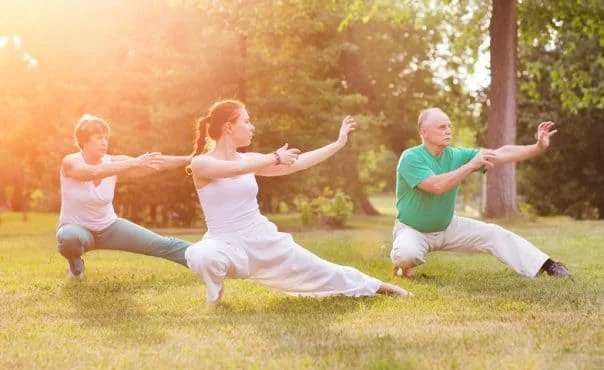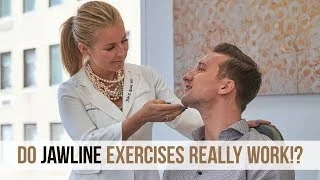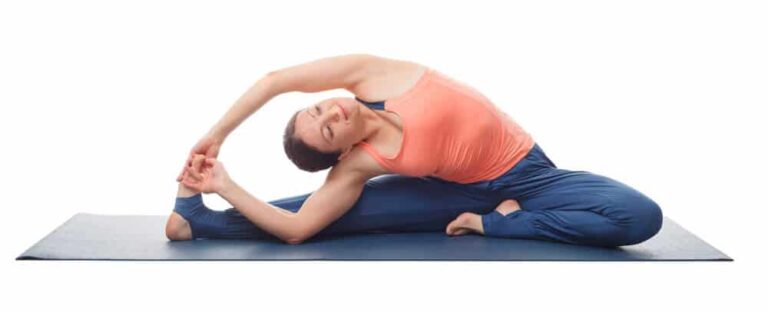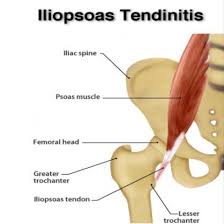Tai Chi: The Moving Meditation
Tai chi also known as a tai chi chuan or tai ji quan is a healthy mind-body technique that was found in ancient China. It is traditionally performed in a group and is mostly understood as a moving meditation. Tai Chi improves strength, flexibility, aerobic movement, and balance. It has been proven to improve cardiovascular fitness, decrease blood pressure, prevent falls, and help people who have arthritis. There are even huge emotional and mental advantages.
Tai chi training involves slow-movement flow and with that comes a cadre of health advantages, too, including better balance, mobility, and coordination. Tai chi (also called tai chi chuan or tai ji quan) is a mind-body practice that connects activities, meditation, and deep breathing, according to the American Tai Chi and Qigong Association (ATCQA).
The term “tai” means “supreme,” “chi” suggests “boundary,” and “Chuan” means “fist” or “move,” according to the University of Tennessee at Chattanooga, which operates a wheelchair and adaptive tai chi program. Put those definitions together, and tai chi chuan translates to a form of movement that produces inner peace, power, and awareness, and fosters overall wellness. Though there are several different forms of tai chi, its movements contain a series of postures that you flow via during a tai chi class with the direction of an instructor.
Introduction
Tai chi is a form of movement that started as a Chinese tradition. It is based on martial arts and applies slow motions and deep breaths. Tai chi has many physical and emotional usefulness. Some of the advantages of tai chi include reduced anxiety and depression and progress in cognition. It may also assist you in controlling symptoms of some chronic diseases, such as fibromyalgia or chronic obstructive pulmonary disease (COPD).
Tai chi is an ancient system of training that was created in China in the 12th century A.D., according to the ATCQA. It was originally designed for self-defense and martial arts but ultimately grew into a health and wellness practice. Some believe it is a great-grandchild of the older practice of qigong,
In the mid-1950s, a group of Chinese tai chi masters developed a standardized understanding of tai chi that had 24 postures, making tai chi more beginner-friendly, reports the University of Tennessee at Chattanooga.
While there are multiple different styles of tai chi, separately is based on a common set of principles, including:
- Utilizing the mind to start the movement
- Moving with simple, lax joints
- Synchronizing body motions
- Performing movements in circular motions
- Keeping a continuous flow
While tai chi remains a common approach in Asian countries, its popularity has been growing, an associate professor of medicine and the director of the Osher Center for Integrative Medicine.
Around 3.75 million people in the U.S. practice tai chi, according to the market data firm Statista. More middle-aged and older adults tend to rehearse tai chi, but there are increasingly more martial arts or sports interpretations of tai chi that are attracting more youthful people.
Types of Tai Chi:
A form, often known as a series of motions, is the foundation of tai chi. There are five tai chi family styles:
- Chen This style of tai chi is the oldest and includes martial arts moves including punches, kicks, and jumps.
- Yang This common technique emphasizes balance and has slower, smoother motions.
- Wu is a well-known style that employs greater forward and backward leaning movements.
- Sun This form of tai chi emphasizes footwork and is more similar to dancing.
- Hao, It’s a more sophisticated kind that concentrates on qi (life force), although it’s hardly used today.
How Tai Chi Works?
During tai chi, you put your feet on the floor and shift your weight from the right to left leg as you do various movements that flow from one to the next. There may be anywhere from thirteen activities (or positions) to dozens in a single session. Tai chi is supposed a mind-body exercise.
The mind remembers a person’s thoughts, emotions, attitudes, and beliefs, while the body is our physical health, and the soul represents breath. Tai chi can affect all of those aspects of a person.
Breath, movement, and awareness function together in tai chi. As you push your body through the physical movements (or positions) of tai chi, you are asked to relax and breathe deeply and naturally, as well as focus your attention. Your movements are natural, and your joints are flexible (not extended), as shown in how you keep a tiny bend in your knee.
As for the mind part, “Tai chi is a very reflective exercise. It is done gradually and mindfully. Some refer to it as “meditation in motion” or “mindfulness on wheels.”Tai chi benefits you by staying present in class, relaxing your breathing, and concentrating your mind.
For individuals who are living with a sickness, such as cardiovascular disorder, heart failure, hypertension, metabolic syndrome, or chronic obstructive pulmonary disease (COPD), practicing tai chi may help enhance fitness and build strength, particularly in the lower body: “In some cases, tai chi does as well as energetic walking.
Tai chi is also traditionally accomplished in a group setting, which can improve enjoyment, create a sense of community, and help with encouragement to be physically active.
Benefits of doing a Tai Chi:
The advantages of tai chi contain everything from mental, physical, and emotional benefits to spiritual and healing benefits. While not a complete list, the following are some of the more well-known mental and physical benefits of tai chi.
- It is a safe and useful form of physical fitness for beginners. If you are new to exercise or just fresh to this form of fitness, the slow, low-impact activities are safe and gentle on your body and help improve flexibility and posture.
- It supports managing stress-related anxiety by incorporating the relaxation and stretching advantages right into the movement. You will learn how to rest and move gradually through the movements while breathing.
- It may help improve your mood. Investigators have found that tai chi may be effective in decreasing depressive symptoms, anxiety, and mood disorders.
- You will have better sleep. Doing tai chi regularly may contribute to a more relaxing sleep cycle.
- It’s adaptable. Tai chi is both gentle and gradual, which makes it easily adaptable to multiple fitness levels and health diseases.
- You will sit up straighter. Through the gradual and planned flow of the moves, the practice of tai chi helps enhance posture and body alignment.
- It eases pain. Engaging in tai chi can enhance the symptoms that result from fibromyalgia. A 2018 indicated that tai chi delivered more pain relief than other exercises suggested for people with fibromyalgia.
Tai chi for seniors
Tai chi is one of the more famous techniques of movement for seniors. That is why both active seniors and those fresh to fitness can help from the low-impact moves introduced in this gentle form of exercise.
- Increases body awareness. Known as slow-motion exercise, tai chi promotes slow and deliberate body exercises accompanied by deep breathing. This combination assists seniors to focus on the way their body moves and permits them to pay attention and address any distress they may be feeling.
- Improves cognition. A short 2018 study showed a relation between the practice of tai chi and progress in cognition for seniors with mild cognitive impairment. This is promising news for older adults examining to enhance their memory and organizational functioning skills.
- Reduces risk and fear of falling. Holding good balance, flexibility, and coordination evolves more important the older you get. While most physical exercises, especially weight-bearing movements, can assist seniors in maintaining and even enhancing their mobility, exercises such as tai chi also lower the risk and fear of falling in older adults by enhancing balance and motor function.
- Eases arthritis pain. Elders with chronic pain from diseases like arthritis may experience a reduction in symptoms by following a typical practice of tai chi.
- May Improve Quality of Life in Coping With Chronic Diseases: There’s evidence to show that tai chi may impact circulation, leading to enhanced blood pressure levels that decrease the chance of heart disease.
- May Strengthen Bones: One of the possible benefits of tai chi is that it may mitigate bone loss, as the stance held during tai chi creates a weight-bearing activity that may eventually help minimize bone loss and therefore may assist in decreasing the risk of osteoporosis.
- May Improve the Experience of Aging: Even if you have not been physically involved before, tai chi can make a big difference in how your body and brain age. older adults who perform tai chi registered enhanced mobility, reduced joint stiffness, better sleep, less anxiety, better cognitive process in those who had mild cognitive impairment, and overall better quality of life.
Those who should not do Tai Chi:
Tai chi can be adjusted to fit everyone. If you are looking to evolve physically active or are currently living with a health disease(such as heart disease or COPD), you may want to think of tai chi training to meet your exercise requirements in a way that’s gentle on the body. There are also seated versions of tai chi if you have physical restrictions that wouldn’t allow you to stand comfortably for the duration of the class.
While there are no issued studies on the safety of tai chi during pregnancy, the NCCIH notes it is likely safe during pregnancy in most instances, as long as you take proper precautions and consult with your doctor before starting a tai chi practice if you’re pregnant.
Advice for starting Tai Chi:
Follow these suggestions to see the right instructor and class for you.
- Ask Around: According to NCCIH, tai chi instructors are not required to hold a license, and the activity is not overseen by American authorities. In other words, there are no requirements for becoming a certified tai chi instructor at the federal level. Consult community members and your healthcare professional (your doctor, massage therapist, acupuncturist, or integrative practitioner) for suggestions until there are established standards.
- Look at a Teacher’s Credentials: If you are moving to tai chi for a particular underlying health problem, know that some teachers may have medical backgrounds, and it’s useful to find one aligned with your requirements. Some may be acupuncturists, physical therapists, or medical doctors who could sufficiently understand your situation and how to adjust the movements for you. When talking with a teacher, you can also ask them if they think their style of class is right for you given any restrictions you may have, such as arthritis.
- Give a Class a Chance: Ideally, search for a beginner-friendly class. Then, take a class (or a few) in your area to see if it is a good match for your fitness goals. Ask around taking an initial class before committing to a series of classes. Another choice: Ask a teacher if you can come to watch one class to get a better feeling for what the practice implicates before you try it.
- Talk to the Teacher: In complement to requesting an instructor whether their class is a match for your physical abilities, also ask if they teach the fundamentals of alignment, grounding, training, and breathing. Stress that you are a newbie and ask if they offer any beginner classes.
Here we describe the steps of Tai Chi Exercises:
Warm-Up
Just like in every training, warming up the body is necessary to assist in controlling injury and promote Tai Chi activities.
An illustration of a primary Tai Chi warm-up is the waist-loosening activity:
- Stand with your feet flat on the ground– a little wider than hip-width apart.
- Rest your arms by your sides.
- Turn your hips to the right and the left while letting your arms hang loosely. With every rotation, your arms should flap against your body as you rotate.
- Repeat for 2-4 minutes or when you feel like your body has warmed up.
- You can then contain your neck, shoulders, and spine in the rotations, making each activity smooth.
Commencing form
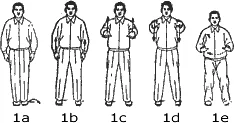
- Place your feet shoulder-width apart while standing, distributing your weight equally between your two legs. Arms are at your sides, relaxed.
- Inhale slowly
- Raise your arms to shoulder height or a comfortable level. Relax your wrists and elbows.
- the exhale
- Relax as you extend your wrists and arms.
Broadening one’s chest
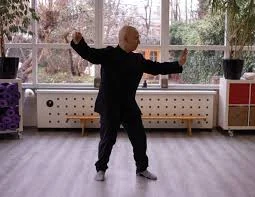
- Place your feet shoulder-width apart while standing, distributing your weight equally between your two legs. Arms are at your sides, relaxed.
- Inhale slowly
- Raise your arms to shoulder height or a comfortable level. Relax your wrists and elbows.
- the exhale
- Open your arms and chest while keeping your hands together. Let your shoulders unwind.
- Inhale slowly
- Bring your arms back to the center while facing your palms in the same direction. Keep your shoulders relaxed, please
- exhale
Dancing with Rainbows
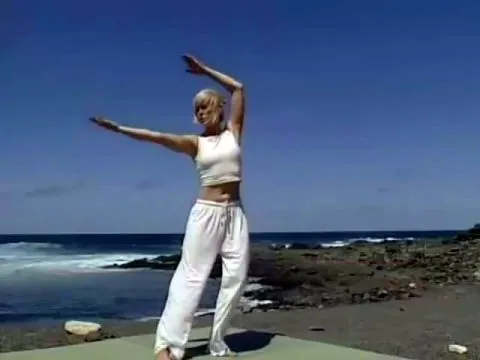
- Inhale slowly
- Your weight should now be on your right side as you raise your right arm above with your elbow bent.
- Extend your left arm straight out in front of you at the same time (this stance resembles an archer about to discharge his bow or a teapot).
- Inhale slowly
- Raise your hands overhead while shifting your weight to the center in one fluid motion.
- Exhale your breath.
- Mirror the form you were holding on the right while shifting your weight to the left.
Circling arms
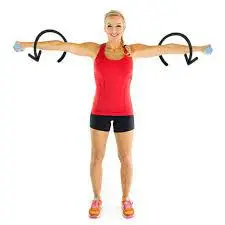
- Inhale slowly
- Your weight should now be on your right side as you raise your right arm above with your elbow bent.
- Extend your left arm straight out in front of you at the same time (this stance resembles an archer about to discharge his bow or a teapot).
- Inhale slowly
- Raise your hands overhead while shifting your weight to the center in one fluid motion.
- Exhale your breath.
- Mirror the form you were holding on the right while shifting your weight to the left.
Twisting waist and swing arms

- Keep your knees slightly bent and rotate your body at the waist towards your right side.
- Inhale slowly
- Draw your right arm back in an arc, elevating your elbow towards shoulder height (or as high as is comfortable), with your palm facing up and your arm at your side.
- the exhale
- Your palm should now be facing forward as you start to rotate your wrist. As you begin to shift your weight forward and extend your right arm in front of you, do the same. Similar to a front crawl in swimming, consider this movement.
- Repeat on your left side (those who have been practicing for some time will be executing the movements simultaneously with both arms, but when beginning it is fine to move one side at a time, and easier to get good quality movement).
Rowing the boat

- Inhale slowly
- Raise your arms up and back. Your palms are facing up.
- the exhale
- Put your palms facing ahead and raise your arms as if you were rowing a boat.
- Breathe in, turn your body to the left from the waist, and reach over with your left arm as high as it feels comfortable, holding a ball. Exhale, then bring your left arm and waist back to where you started.
- The idea of holding a ball is presented in the seated photographs to show the form; a ball is not required for this exercise. Now, turn your body to the right and reach your right arm across as you did on the left.
Carrying the moon
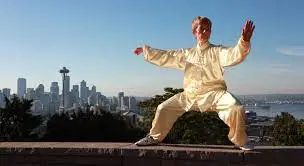
- Inhale.
- From the waist up, turn your body to the left. Your shoulders relax and your elbows are slightly flexed. Now extend both arms to the left while keeping your head fixed on your hands.
- Exhale
- Lower your hands. then make a right turn and repeat.
Twisting waist and pushing palms

- Inhale and bring your palms, facing up, to your waist.
- Exhale, and then twist your waist to the left. Draw the elbow back while maintaining a small bend in the left wrist and elbow.
- Push with the right hand facing front while simultaneously extending your right arm forward as if you were trying to halt traffic.
- Inhale, go back to the center, and distribute your weight evenly before moving to the right and extending your left arm with the palm facing forward.
- Before you can coordinate both arms together, you can try practicing the action with just one arm at a time if that helps.
- Knees bent, gently rock from side to side.
Playing with clouds
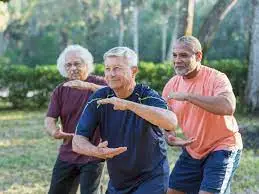
- Inhale
- Turn to your left while keeping your arms relaxed (held out in front as if cradling a baby). As you do a waist-twisting motion, shift your weight to your left foot. Your left hand should be the focus of your attention at all times. Your right hand is placed underneath.
- Exhale and turn back to your starting posture.
- Repeat the motion towards your right (this time your right hand will be the furthest from your middle) while taking a deep breath.
Scooping from the sea
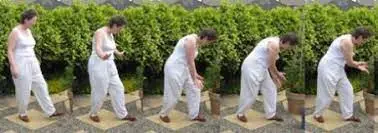
- As you stand, place your left foot ahead, flex your left knee, and lean slightly to the left.
- Breathing
- Squat down over your left knee and join your hands, palms facing up.
- Raise your hands over your head (or as high as is comfortable) as you slowly separate your arms and shift your weight to your right foot.
- Release the air.
- Extend your arms wide, then step closer to the water to scoop
Playing with waves
- As you stand, place your left foot forward. Take a deep breath in, flex your elbows, and raise your hands till they are at your shoulders with the palms facing forward. Your weight is supported by the back leg.
- Exhale, shift your weight to your front leg, push your arms forward, and keep your hands pointing forward.
- After exhaling, return your weight to the middle while keeping your hands on the ground.
Spreading your wings
- Put your left foot forward as you stand. Inhale and reach forward, keeping your arm out in front of you. Your elbows should to be relaxed and slightly bent.
- Aim for chest height or as high as your arms will allow comfortably. Together, your hands form a fist. Allow your right heel to lift off the ground as you advance if you’re feeling confident.
- Exhale, then step backward while shifting your weight to your right foot. As you do this, split your arms and spread them out as far back as you feel comfortable doing so—like wings.
- Once more, the elbows are slightly bent and the palms are facing front.
Punching
- You can balance yourself by spreading your weight equally over both legs while standing with your feet shoulder-width apart.
- The arms are still at the sides and the fists are soft.
- Breathe out and, if it’s possible, thrust your right arm up to your chest.
- Inhale.
- Retract your arm till it is at your side. Your fist should be facing up when you flip your wrist over.
- Similarly, move your left arm.
Flying like a wild goose
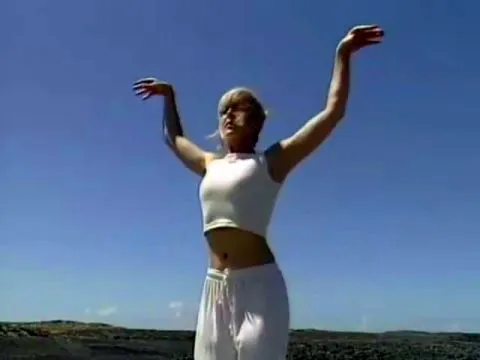
- Place your feet shoulder-width apart while standing, distributing your weight equally between your two legs.
- Inhale deeply, lean slightly forward so that your whole weight is supported by the balls of your feet, and lift your arms in a sideways motion above your head.
- During this motion, your wrists stretch until they are facing away from your body and out to the sides.
- Your arms remain relaxed throughout.
- Exhale and descend through your knees while lowering your arms to the side with your wrists up.
- Now you’re taking off like a wild goose.
Spinning wheels
- Place your feet shoulder-width apart and balance yourself by distributing your weight evenly over both legs.
- Allow your arms to drop in front of you, palms facing each other, elbows bent, shoulders relaxed.
- Breathe in, twist your body to the right, and raise your arms above your head while making a huge circling motion with your palms facing each other.
- Exhale and lower your arms to your left side while maintaining the same spacing between your hands.
Bouncing the ball
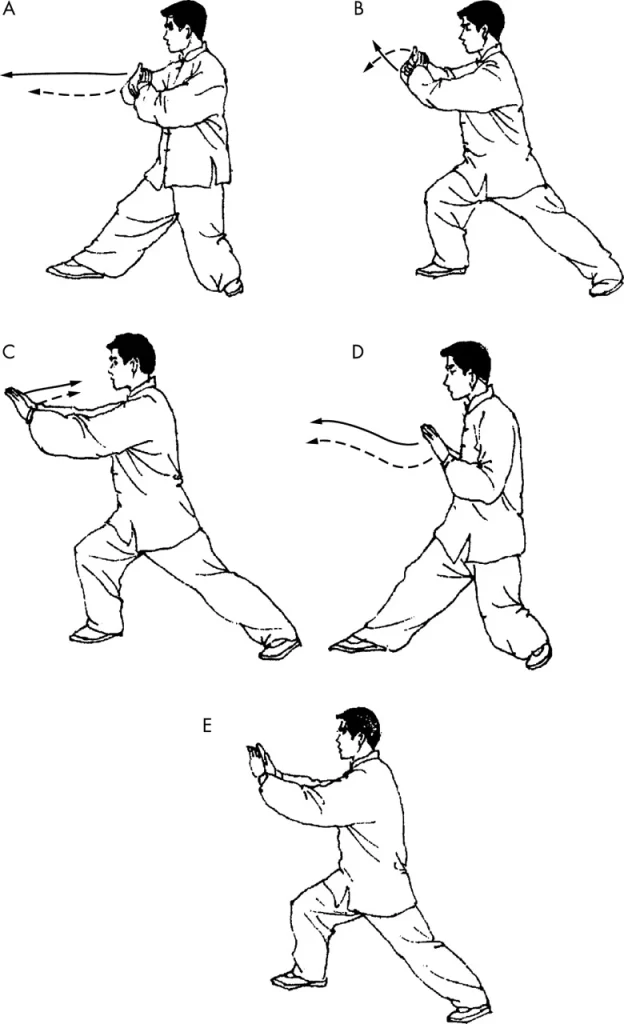
- Place your feet shoulder-width apart while standing, distributing your weight equally between your two legs. Shift your weight to your right foot.
- Inhale.
- Raise your right arm to shoulder height with your palm facing down.
- Lift your left foot off the ground. Exhale, then slowly lower your arm and foot.
- Continue on the opposite side.
Pressing the palms
- Standing, spread your feet shoulder-width apart and balance your weight evenly between your two legs.
- Clasp your hands together, palms facing up. Take a deep breath in and put your hands to your chest.
- Breathe out
- Turn your hands so they are facing down, then progressively lower your arms.
What to Predict Early, During, and After Tai Chi:
Your first tai chi lesson may be a fantastic experience. All instructors have their education style, but follow these general tips to remain comfortable in class.
Dress comfortably. Wear non-restrictive clothes and footwear.
Introduce yourself. If you are coming to tai chi with health issues (for example, knee problems), let your educator know before you begin class, so they can assist you in adapting any movements.
Warm-up. Each instructor will have their warm-up. mainly the warm instruction to students is to stand with their feet hip-width apart with knees soft and bent. Then students move around side to side to feel where they are and ask them to visualize their legs as the trunk of a tree, rooted and grounded.
Go easy on yourself. It’s okay if you’re unfamiliar with the movements. I have two expectations for beginners: try to pay attention to your body as much as you can and try to keep your thoughts in the room as much as you can. Also acceptable is the feeling that you lack coordination. The most significant thing is to be open and make an effort to let go; most individuals will find that tai chi helps them do this. It’s not important to be perfect; this is just practice.
Take five, if necessary. It’s fine if you wish to relax by sitting down. There is no explanation for uncomfortable pushing.
You may feel changed. After class expect to feel different. It’s [often, for the majority of people] an odd combination of feeling extremely aware, present, and energized, These emotions may eventually result in a more upbeat state of mind with continued exercise.
You may want more. The main idea is that some people may use tai chi as a “gateway exercise” since it boosts their self-confidence in their body’s capacity to manage problems.
Set your schedule. It can be difficult to start a new workout regimen, but in my expert opinion, one hour, three times per week for 12 weeks is the optimal quantity to practice tai chi for the benefits. If that’s too challenging, try for an hour every other day for 16 weeks.
Take it home. If doing tai chi a few times a week is not yet possible, but you want your skills to improve, you can practice at home. As advised by the instructor, spend 10 minutes in the hip-width positions with soft knees and the backs of your hands on your lower back while moving forth and backward. Maintain a lifted chest and place your weight over the middle of your feet. Three times a week, perform this. It relieves the pressure to perfect the moves at home while enabling you to clear your mind and physically be present.
Adjust your expectations. Tai chi may provide advantages right away if you are new to exercising or have been more inactive. Alternatively, it can take longer if you currently engage in regular exercise to see these possible benefits to your mind and body.
Tai Chi Risks:
For most people without serious medical conditions, tai chi is generally safe. In a previous comprehensive evaluation of 153 randomized controlled studies, Wayne and his colleagues discovered that while some people feel muscle aches and pains after tai chi, significant side effects are unlikely to occur. That also applies to newcomers. However, it’s crucial to visit a qualified healthcare expert before beginning a new fitness program to ensure that it’s appropriate for you.
Precautions:
Even though tai chi is believed one of the safer types of physical fitness, it is still a good idea to talk with your physician before trying something new, particularly if you have any existing medical disorders.
While participating in a tai chi class, if you feel light-headed or faint, stop what you’re doing and sit down. If the feeling continues, make sure to check in with your physician.
FAQ
How can you describe tai chi?
Tai chi also known as a tai chi chuan or tai ji quan is a healthy mind-body technique that was found in ancient China. It is traditionally performed in a group and is mostly understood as a moving meditation.
What are the potential health benefits of tai chi?
On a physical level, Tai Chi improves strength, flexibility, aerobic movement, and balance. It has been proven to improve cardiovascular fitness, decrease blood pressure, prevent falls, and help people who have arthritis. There are even huge emotional and mental advantages.
What happens during a tai chi class?
After a warm-up to ground your body and train your mind for class, your educator will guide the class through each exercise, encouraging you to remain relaxed and breathe deeply. Because the movements are done in a slow and controlled manner, the class will typically move together as one.
What is tai chi exercise good for?
Tai chi practitioners saw improvements in their ability to walk, stand, get out of bed, and enter and exit a car, as well as in their discomfort and stiffness, balance, and physiological and psychological health.
Which type of workout is tai chi?
For starters, tai chi is a full-body training with muscle strengthening, as you stand erect, moving slowly as though you are pushing against a gentle resistance, and then shifting your weight and maintaining positions, such as standing on one leg or remaining in a squat, are required.
Which is better tai chi or yoga?
Better equilibrium and flexibility may be the brand benefits of tai chi and yoga. And with good explanation. Both practices are designed to improve body awareness and have been linked to these improvements. However strong research points to tai chi for more suitable balance and yoga for improved flexibility.
Why is tai chi so difficult?
Tai chi also requires full-body integration of training, so trying to jump into tai chi and including the activities of your whole body at once can be a challenge.
References
- Migala, J. (2022, November 22). What is Tai Chi? A guide to tai chi for beginners. EverydayHealth.
- Lindberg, S. (2019, June 3). How to do Tai Chi. Healthline.
- Westwind House. (2018). 7 Basic Tai Chi Exercises for Seniors | Westwind House. Westwind House | A Unique Retirement Community.

